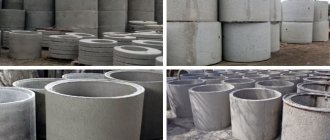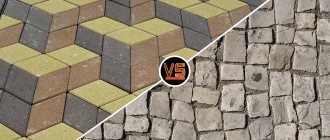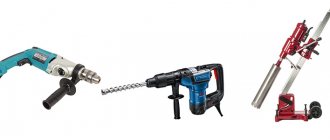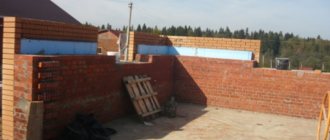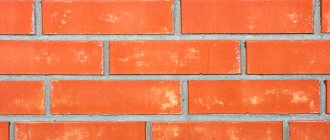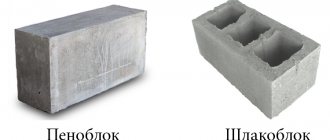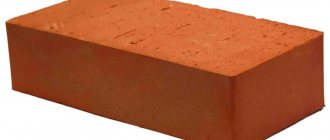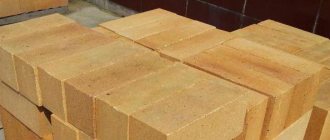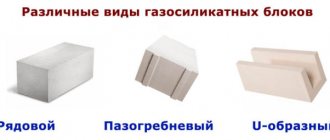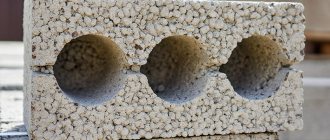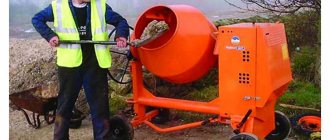How to transport or deliver aerated concrete
When building a house from aerated concrete blocks, the developer or future owner is faced with the question: how to deliver aerated concrete to the construction site? Many organizations and private carriers offer construction materials transportation services. The blocks are transported by Gazelles, trucks, long trucks, and scows. Which transport is better to use without overpaying? We'll tell you in the article.
Transport for aerated concrete delivery
Transportation of aerated concrete is carried out by freight transport with a carrying capacity of 1.5 to 20 tons. As a rule, carriers consider gas blocks not as tonnage, but as pallets. The weight of 1 pallet of aerated concrete depends on the size of the blocks and their density. On average, the weight of a full pallet ranges from 1.1 to 1.3 tons. The volume of one pallet is from 1.7 to 2 m³. Thus, we can conclude that the body of a standard Gazelle, with a volume of 18.5 cubic meters, can accommodate 8 pallets. But that's not true! After all, the carrying capacity of the Gazelle, even with an extended base, does not exceed 1.5 tons, which means it is impossible to transport more than 1 pallet of aerated concrete blocks in 1 trip with this inexpensive van.
It is most profitable to transport aerated concrete blocks by vehicles with a carrying capacity of 10 tons or more. Such machines include:
- tilt trucks;
- open areas;
- long scows.
Additionally, vehicles can be equipped with a trailer and a manipulator.
Advantages of delivering aerated concrete blocks by machine with a manipulator or truck
A crane with a boom length of 6 to 12 meters, mounted on a vehicle, allows you to quickly load materials at a warehouse or manufacturing plant and unload them at a construction site. In the absence of a manipulator, loading and unloading equipment will have to be hired separately. This turns out to be much more expensive than renting a long vehicle with a manipulator.
- fast loading/unloading;
- optimal prices;
- savings on lifting equipment.
Despite its convenience and cost-effectiveness, it is not always possible to use a manipulator. For example, when delivering blocks over a long distance (more than 30 km), it is better to use a covered truck, in which the building materials are reliably protected from climatic influences and mechanical damage on the road. In addition, trucks move at a higher speed than manipulators, which means that gas blocks will be delivered to the construction site faster. How to unload a 20-ton truck? You can use hydraulic trolleys or loaders, the cost of renting which will cost much less than renting a crane.
How many pallets of aerated concrete are included in the car?
The number of pallets that can be transported in 1 trip is a characteristic by which transport for transporting aerated concrete blocks is selected. An open-sided truck can load more pallets than a tilt truck. Euro pallets with gas blocks are not prohibited from being placed in 2 tiers if there is reliable fastening, but the height of the truck van is 2.40-2.48 meters. A standard pallet with blocks has a height of 1.6 to 1.8 meters, which means that only 1 tier of pallets can be placed in a closed truck.
The number of pallets of aerated concrete that can be transported with an open length depends on the length of the trailer:
- trailer 12 meters - 18 pallets;
- trailer 9 meters - 14 pallets;
- hitch 6+6 meters - 16 pallets.
How many pallets of aerated concrete are included in the manipulator? Depends on tonnage: 20 tons - 16 pallets, 10 tons - 8-9 pallets, 5 tons - 4 pallets. About the same amount of other cellular blocks, such as foam concrete, are included in the car.
Safety measures when transporting aerated concrete blocks
The breaking standard for aerated concrete during transportation is 5%. This is quite a lot and good carriers do not allow such a percentage of combat. Subject to compliance with transportation rules and safety measures, damage to the gas block is completely excluded. Requirements for the transportation procedure, transport, and fastening methods are regulated by paragraph 8 of GOST 31360-2007:
Requirements for loading and unloading operations:
- loading/unloading of blocks onto (from) a vehicle must be carried out mechanically using lifting and load-handling devices that prevent damage to materials;
- It is prohibited to unload or load aerated concrete blocks in bulk.
Requirements for the vehicle (VV):
- The vehicle must have air suspension;
- if there is an awning, it must be folding;
- at least one of the sides of the vehicle must be folding;
- side pillars must be dismantled;
- the floor in the body must be level and non-slip;
- There should be no foreign objects or debris in the body.
Load securing requirements:
- pallets are fixed with special belts;
- each row of pallets is secured;
- the straps are tightened so that the load does not move;
- Protective corners are installed between the belts and blocks;
- Do not use improvised means for fastening.
Only a good carrier can meet all the requirements.
How to choose the right carrier
When choosing who to trust to transport blocks from the warehouse to the construction site, ask the carrier’s representative a few questions:
Question #1: How will the download proceed?
At the factory, the blocks are loaded with a forklift, so the machine must have this option.
Question No. 2: How will the pallets with blocks be attached?
The driver must secure the blocks with belts, and use corners to prevent damage. Not all drivers use belts and angles, trying to save time.
Question No. 3: At what speed will a loaded vehicle travel?
The maximum speed for a car with an open body is 60 km/h, a truck with an awning is 80 km/h with good road quality. If the carrier promises to deliver blocks in an hour from a warehouse located 70 km away, then you should be prepared for a large percentage of the battle.
Question No. 4: How is delivery carried out?
The driver must call the customer immediately after loading the car. This will help prepare for the acceptance of the gas block at the construction site: organize a team of workers, lifting mechanisms, and clear access roads. All this is necessary in order to avoid transport downtime, which is always paid at a separate rate. Having received answers to these questions, you can compare the offered services for the delivery of aerated concrete and choose the best offer.
How many gas blocks are in a pallet?
If you plan to build a country house from aerated concrete blocks, then to calculate the need for building materials you must have some data. Now the products in question are not sold individually, because the cost is usually indicated per cubic meter or pallet (pallet), so to calculate the need for materials you need to know how many such blocks are in a cube.
How many gas blocks measuring 200×300×600 are in a pallet?
Using simple calculations, it can be calculated that per cubic volume there are 28 aerated concrete products with standard dimensions of 200 × 300 × 600 millimeters or 20 × 30 × 60 centimeters. To obtain the indicators under consideration, it is enough to divide the cubic meter by the volume of one block. As you know, in a cube there are 1000000 cm3 (obtained by multiplying all sides 100x100x100), and in a block of 36000 cm3 there are 60x20x30, so when dividing 1000000/36000 you get 27.7 pieces. Similar calculations can be carried out for materials of other sizes.
Now let's look at the pallets. Usually 0.9 is placed on a wooden platform; 1.44 or 1.8 m3 of material. With simple calculations, you can calculate that 0.9 cube is 25 blocks; 1.44 m3 - 40 blocks and 1.8 m3 - 50 standard size gas blocks.
Number of non-standard aerated concrete blocks in a pallet
Next, let's look at the gas block from the manufacturer Stonelight, which is loaded into non-standard size pallets:
- for wall blocks with overall dimensions of 7.5 × 20 × 60 centimeters with a pallet volume of 1.62 – 180 pieces;
- for which products with overall dimensions of 10 × 20 × 60 centimeters with a pallet volume of 2.16 m3 (considered standard) – 180 pieces;
- blocks for partitions with dimensions 12×20×60 (standard pallet volume) – 150 pieces;
- for blocks 15×20×60 centimeters (standard pallet) – 120 pieces;
- block for the construction of load-bearing walls of buildings with dimensions 20x20x60 cm (pallet with the same volume) - 90 pieces;
- products with dimensions 25×20×60 cm (pallet volume 2.1 m3) – 70 pieces;
- blocks 28×20×60 cm (pallet volume 2.016 m3) – 60 pieces;
- block 30×20×60 cm (standard volume pallet) – 60 pieces;
- block 36×20×60 cm – 50 pieces;
- aerated concrete products for load-bearing walls with overall dimensions 37.5×20×60 cm (pallet volume 1.8 m3) – 40 pieces;
- block 40×20×60 cm with a pallet volume of 1.92 m3 – 40 pieces;
- block for the construction of load-bearing walls with overall dimensions 50x20x60 cm with a pallet volume of 2.4 m3 - 40 pieces.
kirpichikblok.ru
Standard number of pieces in one pallet
Red brick
When building a private house, red is often used. For its production, various types of clay are used, which is subjected to a firing process. The result is a very durable product. The weight of a red solid brick will be 3.6 kg, and a hollow one - 2.5 kg. Red perfectly resists precipitation.
The standard size of a pack of red bricks is 250x120x65 mm. But the volume of red bricks depends on its type. When it comes to single solid ones, you need 480 of them, and they weigh 3.45 kg/piece. When you need to buy a red one-and-a-half hollow stone, its package includes 308 pieces. But different manufacturers have their own number of bricks and the number will depend on whether the bricks are of regular size or non-standard size.
Brick weight including pallet
The presented container for transporting bricks is presented in the form of a wooden lattice, where the material is laid. Its weight is 30-40 kg.
But a cube is laid out on the substrate. This is very convenient for the seller, who can very quickly count the goods being sold. A product made from clay can have a design with voids inside or a solid one. The greater the number of cavities, the lighter the stone. For a single brick with cavities, the weight will be 2.7 kg. The weight of such products will be 1.3 tons.
If we consider a red solid single stone, then it is placed on a specially created cover - 200-300 pieces. The weight of the product can reach 3.1 – 4 kg. Its weight will be 1.2 tons.
The weight of the red facing depends on its dimensions. As a rule, such a product is produced hollow, and in shape it can be single or one-and-a-half. If you buy a single one, then its quantity is 325 pieces, and one and a half - 240 pieces. The weight of such products will be 1.4 tons.
How many gas blocks on a pallet?
A pallet is a returnable container that is made from wood and is most often used to deliver blocks to the work site. Standard product size is 1000x1200, 800x1200 mm (Euro pallet) . It’s not enough to know how much aerated concrete is in 1 cube; you should be able to calculate the volume of material on a pallet.
In addition to the dimensions, generally accepted recommendations for laying aerated concrete blocks during shipment apply. If a Euro pallet is used, standard modules are laid out two in length and four in width, five rows are laid on the pallet .
For a standard one, these are two modules in length, five in width, five rows each. If you manipulate the most common gas block 200x300x600 mm, you can find out the number of pieces stacked on one pallet. The volume of one block is 0.036 m³.
It is easier to manipulate indicators converted to meters - 1.0, 0.8, 1.2 m. When making any calculations, the parameters must be correlated with each other
For further calculations, multiply the number of blocks in one row by the number of lines on the pallet:
- standard – 5*5*2 = 50 pcs*0.036 = 1.8 m³;
- euro – 5*4*2 = 40 pcs.*0.036 = 1.44 m³.
Thus, we were able to find out how many gas blocks are in a 200x300x600 pallet.
In practice, it is not enough to know how many gas blocks there are in 1 cube; the master is forced to manipulate broader parameters. When non-standard modules and the same pallets are used, a different calculation will be required.
Example
The master needs to calculate an unknown number of non-standard modules stacked on a non-standard pallet. To do this, measure the volume of the gas block on the pallet.
For example, the dimensions of the pack are:
- width – 1000 mm;
- length – 800 mm;
- height – 1200 mm.
Sequencing:
- calculate the volume – 1.0*1.2*0.8 = 0.96 m³;
- we measure the linear parameters of the block - 200x300x600;
- volume of 1 block – 0.036 m³;
- divide the total volume by the volume of the module – 0.96/0.036 = 26.6 pcs.
There are 26 blocks on the pallet. Rounding values is not always rational. The manufacturer places entire modules on a pallet and will not cut the volume to 0.6 parts. However, when ordering large volumes of material, these proportions should be taken into account.
The sizes of aerated blocks, their properties, and prices are described in the video:
The recommendations presented will help you take a professional approach to the selection and purchase of materials. Knowing how many gas blocks are in 1 cube, the cost, the quantity on a pallet, you can control the correct operation of the manufacturer and the level of costs.
How many bricks can fit in a Kamaz truck?
When planning repair work and purchasing building materials, you should know how many bricks will fit in a KAMAZ. Technical characteristics of vehicles and characteristics of building materials by weight, volume and type make it possible to draw up acceptable transportation standards. Violations of the permissible weight result in damage to the vehicle and the inability to remove the cargo. An exact calculation of the quantity is made before the product is loaded onto the vehicle trailer.
Loading standards
The number of brick pallets included in a truck is calculated according to transportation standards. Such information is calculated at the stage of creating the material or storing it. It is packed on pallets, containers or bags. Each truck comes with information about the permissible carrying capacity of the vehicle, which cannot be exceeded. You should also be careful about the distribution of load along the axles. Below is a table with standards for transporting building materials for a KAMAZ vehicle.
The number of pallets or packages allowed in one KAMAZ-type vehicle is determined by the regulations of the state on whose roads the vehicle will travel, and not just by its technical characteristics.
Transporting bricks
In the past, the transport of bricks was not given as much attention, they were easily piled up or thrown from the truck, but since then the requirements for delivery have changed dramatically.
This is due not only to an increase in the level of service and the requirement to reduce the number of damaged blocks, but also to the emergence on the market of new types of building materials that require careful handling. Considering this factor and the cost of brick blocks, people have developed other methods of transportation and stacking.
Traditionally, there are several types of transportation:
- delivery of bricks to the construction site from the factory: on pallets or unloading from a dump truck into a pile, followed by disassembly and manual laying on prepared pallets;
Advice: when ordering regular bricks, experienced builders immediately take into account the percentage of broken material when unloading.
- transportation by crane at the production site and at the construction site. Careful handling is associated with the delivery of fragile materials, such as decorative bricks.
Rules for transporting bricks on pallets or trays:
- assembly of brick blocks. Taking into account the characteristics of the material, it is necessary to provide for the laying technology and further type of transportation;
- loading. To avoid skewing or falling of the laid block of bricks, consider evenly tensioning the rafters and maintaining balance using special grabs. For example, for POD and POM (we will talk about this in more detail below) a fork lift is selected, for PKDM a pincer lift is suitable;
- transportation of blocks. Typically, transportation is carried out using rail and road transport; it is important to initially provide for the carrying capacity and stability of the pallets;
- unloading The ideal option is a site equipped with mechanized devices for loading and unloading operations. The most dangerous and unprofitable way is to dump the bricks in a heap or throw the material from the body and then place it on pallets.
Important: when you uncontrollably dump bricks into a pile, you lose up to 25% of the material! By the way, just a note - some ]brick blocks[/anchor] accept pallets back. You will not only compensate for your costs for using pallets by receiving a certain amount back, but also clear the construction site of unnecessary structures.
Source:
What does the quantity depend on?
The volumes of bricks that fit in one KAMAZ truck are based on the following characteristics:
The number of units of material that can be placed in the car body also depends on the weight of each of them.
- type of product;
- material size;
- weight of one brick;
- technical capabilities of the car and semi-trailer;
- regulations of the country in which transportation is carried out.
Physically, more products will fit into one vehicle than is allowed by the standards. But technically, this will cause vehicle breakdown, higher fuel consumption and negative consequences for the road surface. The operating factor of the brick is also taken into account, whether it has been used or not. Some additional improvements to KAMAZ, for example, “extended” sides, make it possible to increase the volume of transported cargo.
How to calculate how many bricks will fit in a Kamaz truck?
Determination of how many bricks will fit in the machine is made before loading. Based on the type of brick, the method of its packaging is determined. If it is a pallet, then the dimensions of the product, the method of laying bricks, the weight and type of material and the load-carrying capacity of the pallet are taken into account. A Euro pallet measuring 0.77x1.03 m holds 275 pcs. single bricks of 4.3 kg, and 360 pcs. 3.4 kg each. For an accurate calculation, there is a formula at every enterprise that produces building materials.
The dimensions of the trailer are taken into account and a calculation is made for the permissible weight. The height of one pallet should be no more than 1 m. According to calculations already carried out, one cubic meter will contain 510 pieces. single, 238 pcs. one and a half and 255 pcs. double. A standard tilt vehicle with a permissible carrying capacity allows you to transport 20 pallets of bricks, a KAMAZ - 10 pallets, a KAMAZ coupling with a trailer - 20 pallets. The necessary data for the calculation and formulas for them are contained in special reference literature.
Pallet parameters
All three types of pallets are made in a standard size of 520*1030 mm, taking into account that the maximum load capacity of a filled pallet with bricks should not exceed 750 kg.
Let us immediately note that this is the total weight, regardless of what type of pallet you chose, metal or wood. The structure itself for transportation is approximately 20–25 kg. Structures made with additional supports require the use of a wooden and metal pallet measuring 770*1030 mm. The loading capacity of a loaded pallet is 900 kg, of which 25 kg is a wooden pallet, and 30 kg is a metal pallet.
Exceptions are permitted. If necessary and taking into account the specifics of loading and unloading mechanisms, pallets of sizes 750*1300, as well as 1000*1000 can be made. Such a shield not only can withstand greater loads and accommodate more material, but also requires increased control over the safety of workers and equipment.
How many bricks can fit in a Kamaz truck?
When planning repair work and purchasing building materials, you should know how many bricks will fit in a KAMAZ. Technical characteristics of vehicles and characteristics of building materials by weight, volume and type make it possible to draw up acceptable transportation standards. Violations of the permissible weight result in damage to the vehicle and the inability to remove the cargo. An exact calculation of the quantity is made before the product is loaded onto the vehicle trailer.
Loading standards
The number of brick pallets included in a truck is calculated according to transportation standards. Such information is calculated at the stage of creating the material or storing it. It is packed on pallets, containers or bags. Each truck comes with information about the permissible carrying capacity of the vehicle, which cannot be exceeded. You should also be careful about the distribution of load along the axles. Below is a table with standards for transporting building materials for a KAMAZ vehicle.
The number of pallets or packages allowed in one KAMAZ-type vehicle is determined by the regulations of the state on whose roads the vehicle will travel, and not just by its technical characteristics.
What does the quantity depend on?
The volumes of bricks that fit in one KAMAZ truck are based on the following characteristics:
The number of units of material that can be placed in the car body also depends on the weight of each of them.
- type of product;
- material size;
- weight of one brick;
- technical capabilities of the car and semi-trailer;
- regulations of the country in which transportation is carried out.
Physically, more products will fit into one vehicle than is allowed by the standards. But technically, this will cause vehicle breakdown, higher fuel consumption and negative consequences for the road surface. The operating factor of the brick is also taken into account, whether it has been used or not. Some additional improvements to KAMAZ, for example, “extended” sides, make it possible to increase the volume of transported cargo.
How many bricks are in a pallet
What do you think is the most common building material for the construction of buildings, walls and other structures in the post-Soviet space? Brick of course! You can even make a good barbecue out of it. Some people line a metal sauna stove with bricks. The baths themselves are also being built. You can read about how to properly insulate a bathhouse from the inside on our website.
You are planning to start construction and have already calculated the amount of material needed, but difficulties often arise associated with packing the bricks. Manufacturers almost never consider this building material as pieces; only occasionally do distributors do this. It’s the way it works that bricks are measured in pallets. And there is no point in fighting this. And therefore, a completely pertinent question arises: how many bricks are in the pallet? To determine its quantity, you need to count everything yourself, because only occasionally is it indicated on the pallet.
At first glance, there is nothing complicated about this. You just need to count how many bricks are in a row and multiply this number by the number of rows. However, there are some difficulties. It often happens that manufacturers lay out this building material not in a cross bandage, but in a herringbone pattern. In addition, there are different sizes of pallets - 77cm*103cm and 52cm*103cm.
The brick itself is also different: red, silicate, solid, hollow, single, one-and-a-half, double. A serious construction project requires a lot of this material and a mistake of a few pallets is not so bad. But, if we are talking about small construction, then this can greatly affect the total cost of building materials. And why the extra pallets of bricks? “In reserve” they are absolutely useless! Therefore, it will be completely useful to know how many bricks are in 1 pallet.
Features of ordering bricks
When planning to build a house or stove, bricks must be purchased in large quantities. Therefore, it will be useful to know how many pieces of brick are located in one pallet. What is the benefit of this information?
- It is convenient to count when receiving goods at the site. Multiply the number of pieces by the width of the pallet and by the length and multiply by the number of rows. It's much faster than counting every brick.
- Minimizing costs. Each builder has an estimate that will indicate the amount of brick needed. But no one buys exactly according to calculations. Typically, the estimated quantity of bricks is divided by the number of pieces in a pallet and ordered in whole pallets, rounded up. This will create a small safety margin in case of battle.
- You can immediately calculate how many vehicles and what carrying capacity should be ordered in order to deliver all the bricks to the site. "Gazelle" takes one whole pallet, "ZIL" - 5-6 pallets depending on the type of brick and, accordingly, weight, "Kamaz" - up to 10, "Scow" or "Fura" - up to 20.
Calculation of the number of bricks in a pallet
To determine the number of bricks in a pallet, you need to know:
- pallet dimensions;
- laying height;
- brick sizes;
Based on these data, a row can fit between 16-48 bricks. For greater clarity, see the table below.
To find out how many one-and-a-half bricks are in a pallet, we use the following calculations:
The height of the pallet is divided by the height of the row: 12cm – edge, 8.8cm – flat. It turns out that 8 rows can be laid on the edge (100/12=8), and 11 rows flat (100/8.8=11). Where 100 is the permissible maximum stacking height on a pallet (1 meter). There will be as much silicate as red sesquicentes.
If you want to find out how many facing bricks are in a pallet, then this method is irrelevant! Because there is no single standard for such building materials. It is most often smaller in size than a single one. Therefore, such bricks can be in the range of 336 - 672 pieces. It all depends on its overall dimensions.
How much does a cube of aerated concrete cost?
Sometimes aerated concrete blocks are sold individually, but more often the calculation is made for 1 cubic meter. The price depends mainly on the brand (the higher the density, the more the cube costs) and on the appetite of the manufacturer. Today the average price of one cubic meter is:
— in Russia — 3,500 rubles;
— in Kazakhstan — 18,000 tenge;
— in Kyrgyzstan — 3,500 soms;
— in Uzbekistan — 500,000 soum.
Different manufacturers have deviations from this figure within 20%. To find out how much a pallet of aerated concrete costs, you need to multiply the price per cubic meter by 1.152.
This is interesting! If you need information on how much it costs to lay aerated concrete per cubic meter, then you should keep in mind that the cost of work differs not only by country, but also by region. In Russia it grows closer to the capital. On average, the cost of laying one cubic meter is from 1,300 to 2,000 rubles.
How much does a pallet of bricks weigh?
Different types of bricks have different weights. Also, if you know how many kilograms of bricks are in 1 pallet, then you can quite accurately order suitable transport for transportation. Below you will find the necessary information:
- the mass of solid sand-lime brick is 3.7 kg (single) and 5 kg (one and a half);
- hollow brick - 4 kg (one and a half) and 5.2 kg (double);
- ceramic – 2.1 kg (short), 2.6 kg (hollow single) and 3.6 kg (solid single).
How many cubes of bricks do you need?
This depends on the total volume of masonry with mortar. You need to multiply the length, width and height, and then sum it up. Most often, when planning construction, the number of bricks in 1 cube of masonry is calculated. In this case, a solution is discarded, which is approximately 1.5 cm. For example, a one-and-a-half brick has dimensions of 250mm*120mm*88mm. Its volume is 0.00264 m3, and with solution 0.00327 m3. It turns out that 306 bricks are needed per cube of masonry.
How many cubes are there in a pallet of aerated concrete?
First of all, it should be said that the number of pieces in one cubic meter or pallet directly depends on the size of the block. Usually, a standard EUR pallet (“Europallet”, “Europallet”), which has dimensions of 800x1200x144 mm, is used for laying finished products.
With standard stone dimensions of 600×300×200 (DVSh), blocks are laid on a pallet in four rows of eight pieces, which corresponds to 32 blocks or 1,152 m³. If the width is 2 times smaller (for example, 600x300x100), 64 blocks will fit on the pallet, but the volume will remain the same - 1.152 m³.
The total weight of the pallet depends on the density (grade) of the finished product (D500, D600, D700). For example, if D500 brand blocks are stacked, then the weight of the pallet will be D500 × 1.152 m³ = 576 kg, D600 - 692 kg, D700 - 807 kg.
The table shows the most common types of aerated concrete blocks:
Dimensions of aerated concrete block (ACB), mm
How many pallets can fit in a KAMAZ, truck, long vehicle?
Let's assume that the pallet size is 520mm*1030mm. About 32-33 pallets of bricks will fit in a truck; a long length will take about the same amount. KAMAZ can only be loaded onto 10-12 pallets. Now, knowing this information, you can determine as accurately as possible which transport is best for you for transporting bricks.
When the main work is completed, the question of finishing the premises arises. Some people use dry building mixtures for this, which give a unique look to brick walls. This is exactly what is discussed in the article “A Look at the SSS from a New Angle.” There you will find a lot of useful tips in this regard. And in the “Design” section, you will find other nice tricks for interior decoration.
How many empty pallets can fit in a truck?
This also directly depends on the width, length (and in our case, also height, because it determines how many pallets there will be in each stack) of the body.
Pallets are supplied in stacks. The first and last pallets should be “bottom down”, that is, in their normal working position. This will ensure the stability of each “floor”.
The pallets are stacked on top of each other overlapping, that is, the first one is laid, as usual, the second one is laid down with its surface facing the surface of the first one, with its supports facing up. The next one is with the supports down, so that its “legs” fill the space between the supports of the previous pallet.
Thus, it is as if a multi-story puzzle is being put together, or, if you like, a construction set, which creates a stack. The number of stacks of empty pallets that can fit in a truck is the same as the number of loaded pallets that can fit in it.
How many pallets there will be in each stack depends on the height of the body. For example, a 90 cubic meter semi-trailer can accommodate up to 756 empty pallets. In the tent Gazelle "Bull" there are up to 120 pieces, and in the booth - up to 80.
It is important that the width of the trailer is at least 2.45 meters, and by measuring the height of the truck body and knowing that the height of one Euro pallet according to the standard does not exceed 144 millimeters, you can easily calculate how many pallets each pallet stack should contain for the body of a particular truck.
